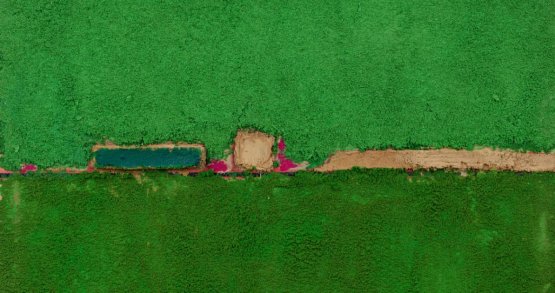Italian critic and curator
Massimiliano Gioni was responsible for the artistic direction of the 55th Venice Biennale in 2013. The theme of that year,
"The Encyclopedic Palace," was inspired by the
imaginary museum of Marino Auriti, intended to gather all the world's knowledge. Gioni considered this dream in the context of the relentless development of digital technologies.
Similarly, the curator compiled the book
"Caffè Paradiso," named after the restaurant where every Biennale artistic director works on their shows. The collection includes interviews with almost all the artistic directors of La Biennale di Venezia from 1993 to the present day. Here, you will find the concerns and aspirations of prominent curators such as
Achille Bonito Oliva,
Jean Clair,
Harald Szeemann,
Okwui Enwezor,
Adriano Pedrosa, and our familiar
Cecilia Alemani. Only
Germano Celant, who passed away in 2020, is missing.
Gioni encourages this year's visitors to explore the numerous worlds united in Venice on foot. "
In my book, Robert Storr tells the story of a quote chosen by Bruce Nauman for his contribution to a book published for the Biennale, and he says—quoting Diogenes—that ‘It is solved by walking’ or, we could say, ‘One learns by walking.’ That’s all it takes to prepare for a Biennale," Gioni shares.
Regarding his approach to curating the Biennale, Massimiliano reflects: "
I actually made it big by going small, by including many smaller works and very few large pieces—and the few large pieces were made of small parts. It was also a show that mixed contemporary art with historical materials; it combined “outsider”—for lack of a better description—artists and professional artists and dilettantes and amateurs; it included museum loans and new productions; it included many things that might have not been art at all." It was a show about the desire to know everything — about this unrealized dream that animated the Venice Biennale since 1895, when the mayor of Venice,
Riccardo Selvatico, had the bizarre idea of collecting the whole world, with its myriad ways of being contemporary, to a sinking city. "
Perhaps for fear it would otherwise suffocate under the weight of its past," shares the curator.
It's no wonder Gioni expects to experience "everything" at the 60th International Exhibition in Venice. "
The Biennale is for maximalists, and I am bound to be one, given my name ['gioni' in Italian translates to 'young,' 'bold,' 'brave']. Irony aside, there is so much to see. I am curious about Nigerian, Italian, and Lebanese Pavilions, and the Pierre Huyghe show.” The curator also insists you cannot leave Venice without saying hello to
Titian. Titian's last painting — "Pieta" — is housed in the Academy, and it is a whole world in itself.
To read more articles about contemporary art please support Artslooker on Patreon
Share:






